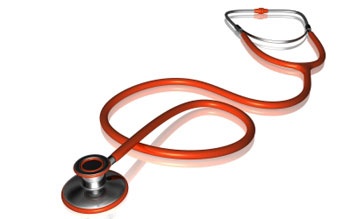Diagnosing Lyme disease is no easy task. Given that there are no reliable tests currently and Lyme disease mimics so many other diseases (see the Symptoms page), it makes it very difficult even for Lyme specialists. Unless you are fortunate enough to develop the tell-tale bulls-eye rash and/or a tick is found attached and is tested and determined to carry Lyme disease, it is impossible to have a 100% accurate diagnosis.
As of right now, clinical diagnosis remains the most important and reliable method for Lyme disease and its many co-infections. Although testing can help in confirming clinical diagnosis, it should not be relied upon. False negatives are common with current laboratory tests for Lyme disease.
There is much controversy surrounding the proper diagnosis and treatment of this disease. It is important for you to educate yourself on all aspects of this disease and to get a good understanding of how the Lyme spirochete works, why testing is unreliable, and why diagnosis and treatment are so difficult. There is a lot of conflicting information available, so I encourage you to do as much research as you can.
Don’t rely on what you “hear” or what you have been told by others. Look behind the surface of information to find out who is behind it. Ask yourself if it makes sense. Look for the scientific evidence to back it all up. Sadly, money, politics, and greed infiltrate every aspect of our society, so you have to be able to discern fact from fiction and propaganda. You have to learn to think for yourself, ask questions, and read between the lines.
If you suspect that you may have been infected it is crucial that you go to see an LLMD or Lyme specialist for diagnosis. Unfortunately, many general practitioners and medical professionals have limited knowledge and understanding regarding the truth about this disease. Although most of them will claim to know all there is to know and may have the best of intentions, they usually draw their knowledge from the 2006 IDSA Guidelines.
These guidelines are based on limited scientific studies, do not include much of the clinical evidence that is available, and are often used against the proper diagnosis and treatment of Lyme disease. These guidelines are in desperate need of revision and have come under a lot of scrutiny in recent times due to conflicts of interest.
At the same time, be aware that there are “LLMD’s” popping up everywhere. And wherever there is desperation and need, there is also the probability of greed and fraud. If you go to any doctor and they tell you that they have “the cure” or their way is the best way, or that they have a 100% success rate (or close to it), consider going to another doctor. I almost travelled 2000 miles to see a Lyme doctor that claimed to have a patent pending cure for Lyme disease. I quickly realized that he was probably not the best Lyme doctor, even though he thought he was. And I saved myself thousands of dollars, time, and heartache.
Having said all of this, I feel it is important to warn you against self-diagnosis and treatment. Many Lyme patients become very frustrated with constantly hearing that there is nothing wrong with them, that all of their tests are normal, that it is “all in their head.” Some who do have a positive test result and receive some treatment often lose medical insurance coverage or simply can’t afford treatment by an LLMD.
When they are forced into these desperate states and are as sick as many Lyme patients are, people tend to migrate towards diagnosing themselves based on symptoms and treating themselves with alternative remedies. It has become increasingly easier to do so with the accessibility of information on the internet.
Although many patients have had some success with this, I strongly urge against it. As I have stated on other pages of this website, the symptoms of Lyme disease are so vast and many that there are many other diseases and illnesses that could be present. For example, Candida overgrowth is very common in our modern culture and when it becomes a severe infection, its symptoms and risks are almost identical to Lyme symptoms. Particularly if you have not had a positive Lyme test and did not find a tick or develop a rash, I would not jump to the assumption that it is Lyme disease.
Please understand that Lyme disease is very complex. It affects the immune system and all facets of the body and mind to a great extent, and it is very difficult to eradicate. Treating Lyme disease can cause many other problems and issues, all of which can be dangerous. Not treating it and monitoring it properly can be equally as dangerous.
PLEASE go to an LLMD or Lyme Literate Doctor for diagnosis and treatment of this disease. It is not something you want to risk experimenting with yourself on. If you are fortunate enough to have a general practitioner who is open-minded and somewhat literate, you may be able to have them work with an LLMD on your treatment, which sometimes helps with insurance coverage. Either way, it is important for you to understand the disease to ensure that you are receiving proper diagnosis and treatment from whatever specialist you end up going to.
Take a copy of the Lyme Flyer and Pertinent Information for Medical Professionals to all of your medical professionals, even if they are not treating you to help spread awareness.

Clinical Diagnosis is currently the most accurate way to diagnose Lyme disease.